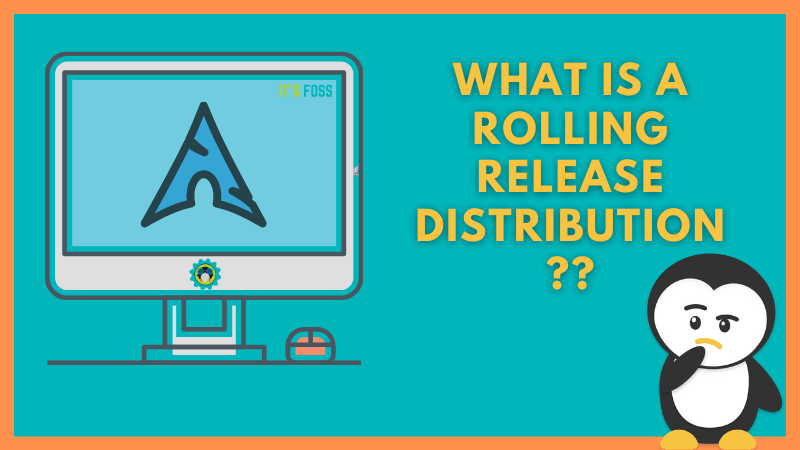Manjaro Linux stands out as a user-friendly distribution rooted in the principles of Arch Linux, known for its simplicity and flexibility. One of the most significant features of Manjaro is its rolling release model. This model offers users continuous updates instead of the traditional fixed release cycle seen in many other operating systems. Understanding the rolling release model is essential for users seeking a dynamic and up-to-date computing experience. This article delves into the essence of the rolling release model within the Manjaro ecosystem, highlighting its workings, advantages, challenges, and how it compares to other release strategies.
What is a Rolling Release Model?
The rolling release model represents a paradigm shift in software distribution. Unlike traditional systems that release major updates at set intervals, the rolling release approach delivers continuous updates. This model allows users to receive incremental updates to their software as soon as they become available. By adopting this methodology, Manjaro ensures that users can access the latest features and improvements without needing to perform a complete system reinstallation or wait for the next major version release. The rolling release model promotes a more fluid and adaptable user experience, accommodating ongoing development and changes in technology.
In the context of Linux distributions, rolling releases cater to users who prefer to stay on the cutting edge of software development. The absence of fixed release cycles means that users do not face the disruption often associated with major upgrades. Instead, they can enjoy the latest applications and system enhancements seamlessly integrated into their operating environment. The rolling release model fosters a sense of immediacy, aligning closely with the fast-paced advancements in software development.
How the Rolling Release Model Works in Manjaro
The rolling release model in Manjaro operates through a systematic approach to updates. Users benefit from a continuous stream of software updates that enhance the overall performance and functionality of their systems. When a new package or update becomes available, it undergoes a testing phase to ensure stability and compatibility before being pushed to the broader user base. This careful vetting process distinguishes Manjaro’s rolling release from some other distributions that may prioritize speed over stability.
For users, managing updates in a rolling release environment becomes a routine aspect of their computing experience. Regular updates are essential for maintaining system security and accessing new features. Manjaro provides an intuitive update process that encourages users to regularly check for and install updates. The user-friendly interface simplifies this process, allowing even those with limited technical knowledge to stay current with their systems. Users can set their preferences for update notifications, ensuring they remain informed without feeling overwhelmed by the frequency of updates.
Advantages of Using Manjaro’s Rolling Release Model
One of the most significant advantages of the rolling release model in Manjaro is the ability to access up-to-date software continuously. Users can experience the latest features and enhancements as soon as they are available, without waiting for a designated release date. This approach fosters innovation and allows users to benefit from advancements in technology as they occur.
Moreover, the rolling release model eliminates the need for major version upgrades, reducing the potential for compatibility issues. In traditional release systems, users often face challenges when transitioning from one version to another, including software incompatibility and the need for manual adjustments. With Manjaro’s rolling release, these concerns are minimized. Instead of grappling with significant changes at set intervals, users enjoy a gradual evolution of their systems, making it easier to adapt to new functionalities.
Additionally, the rolling release model promotes a vibrant user community. As users explore the latest updates, they actively engage in discussions about new features, share experiences, and collaborate on troubleshooting. This dynamic interaction contributes to a sense of belonging and shared learning, enhancing the overall user experience within the Manjaro community.
Considerations and Challenges
While the rolling release model offers numerous advantages, it is essential to acknowledge potential challenges. One primary concern is the stability of the system. Continuous updates may introduce unforeseen issues, and users may encounter occasional bugs or compatibility problems. However, Manjaro’s rigorous testing process aims to mitigate these risks by ensuring that only stable updates are released to users.
For users accustomed to traditional release models, transitioning to a rolling release system may require an adjustment period. The constant stream of updates can feel overwhelming, particularly for those who prefer a more stable computing environment. To navigate these challenges, users should adopt a proactive approach to managing updates. Regularly checking for updates and being aware of any potential issues in the community forums can help users stay informed and prepared for any changes.
Another consideration is the importance of backups. While the rolling release model reduces the need for major upgrades, regular system backups remain crucial. Users should establish a routine for backing up their data, ensuring that they can restore their systems in the event of unexpected issues arising from updates. A robust backup strategy empowers users to embrace the rolling release model confidently, knowing they have measures in place to safeguard their data.
Comparison with Other Models
To fully appreciate the rolling release model in Manjaro, it is valuable to compare it with other popular Linux distributions and their release strategies. Traditional distributions, such as Ubuntu, follow a fixed release cycle, providing major updates every six months. While this approach offers stability and predictability, it can lead to outdated software between releases. Users must perform significant upgrades to access new features, often facing compatibility challenges.
On the other hand, Fedora adopts a more rapid release cycle, with updates occurring every six months. While this model allows users to access newer software more frequently than traditional distributions, it still lacks the continuous flow of updates seen in rolling release systems. The rolling release model excels in delivering software improvements as they become available, creating a more dynamic and flexible computing experience.
Ultimately, the choice between these models depends on user preferences and needs. For those who prioritize stability and predictability, traditional release models may be preferable. However, for users who thrive on innovation and enjoy exploring the latest advancements in technology, the rolling release model in Manjaro provides an exciting and rewarding environment.
Conclusion
The rolling release model in Manjaro Linux represents a paradigm shift in how software updates are delivered and experienced. This approach offers users a continuous stream of updates, ensuring they have access to the latest features and improvements without the disruptions associated with traditional release cycles. While the rolling release model presents certain challenges, such as potential stability concerns, the benefits far outweigh the drawbacks for many users.
As technology continues to evolve at an unprecedented pace, the rolling release model aligns with the demands of users who seek immediacy and adaptability in their computing environments. By embracing this model, users can fully immerse themselves in the vibrant and dynamic world of Manjaro Linux, participating in a community that thrives on shared experiences and collaborative problem-solving.
Ultimately, understanding the rolling release model empowers users to make informed decisions about their computing experiences. Whether users choose to embrace the latest advancements or opt for a more stable environment, the rolling release model in Manjaro offers a compelling option for those looking to enhance their Linux journey.
Additional Resources
To further explore the rolling release model and maximize your experience with Manjaro Linux, consider checking out the official documentation provided by the Manjaro community. Engaging with forums and support channels can also enhance your understanding and connection to fellow users. Whether you are a newcomer or a seasoned user, diving deeper into the world of Manjaro will enrich your computing journey.

